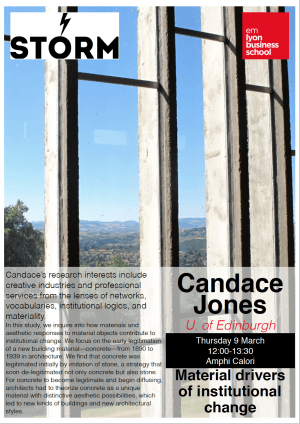Material drivers of institutional change
In this study, we inquire into how materials and aesthetic responses to material objects contribute to institutional change. We focus on the early legitimation of a new building material—concrete—from 1890 to 1939 in architecture. We find that concrete was legitimated initially by imitation of stone, a strategy that soon de-legitimated not only concrete but also stone. For concrete to become legitimate and begin diffusing, architects had to theorize concrete as a unique material with distinctive aesthetic possibilities, which led to new kinds of buildings and new architectural styles.
Don’t miss Candace’s interview, by our fabulous PhDs
Interview: Muhammad Imran and Lucie Cortambert.
Camera and editing: Joseph Tixier and Muhammad Imran.


